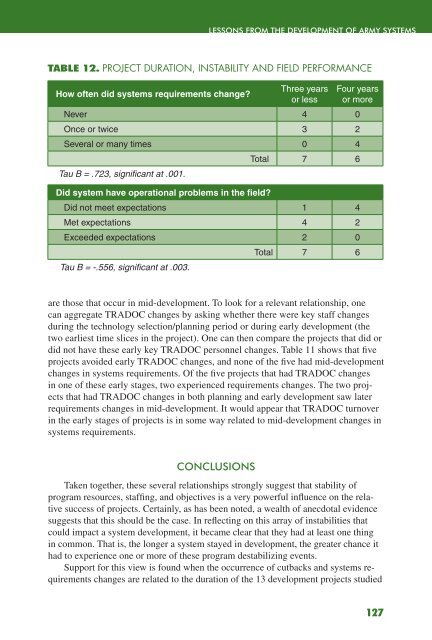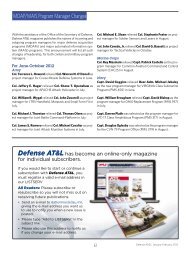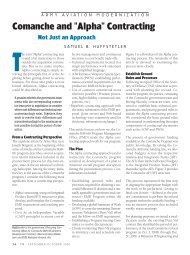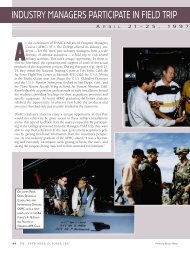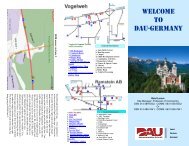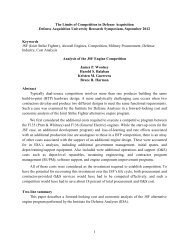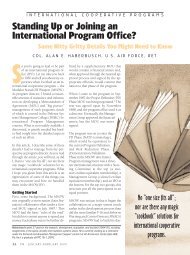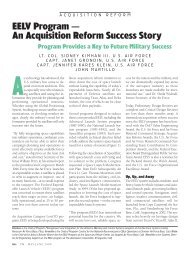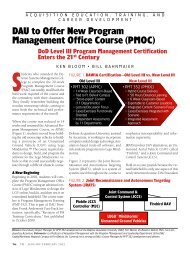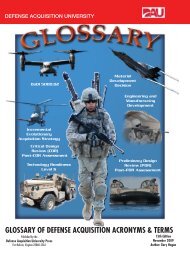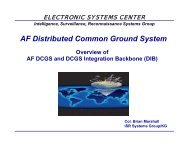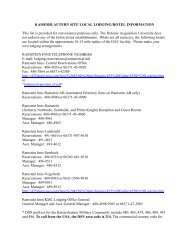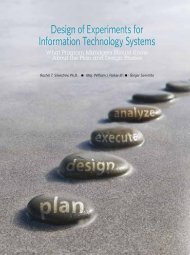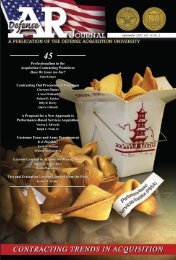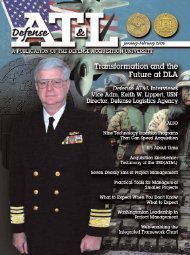Defense ARJ - Defense Acquisition University
Defense ARJ - Defense Acquisition University
Defense ARJ - Defense Acquisition University
Create successful ePaper yourself
Turn your PDF publications into a flip-book with our unique Google optimized e-Paper software.
lessons froM tHe DeVeloPMent of arMy systeMs<br />
tAble 12. proJeCt duration, instaBility and field perforManCe<br />
How often did systems requirements change?<br />
are those that occur in mid-development. To look for a relevant relationship, one<br />
can aggregate TRADOC changes by asking whether there were key staff changes<br />
during the technology selection/planning period or during early development (the<br />
two earliest time slices in the project). One can then compare the projects that did or<br />
did not have these early key TRADOC personnel changes. Table 11 shows that five<br />
projects avoided early TRADOC changes, and none of the five had mid-development<br />
changes in systems requirements. Of the five projects that had TRADOC changes<br />
in one of these early stages, two experienced requirements changes. The two projects<br />
that had TRADOC changes in both planning and early development saw later<br />
requirements changes in mid-development. It would appear that TRADOC turnover<br />
in the early stages of projects is in some way related to mid-development changes in<br />
systems requirements.<br />
conclusions<br />
Three years<br />
or less<br />
Four years<br />
or more<br />
Never 4 0<br />
Once or twice 3 2<br />
Several or many times 0 4<br />
Tau B = .723, significant at .001.<br />
Did system have operational problems in the field?<br />
Total 7 6<br />
Did not meet expectations 1 4<br />
Met expectations 4 2<br />
Exceeded expectations 2 0<br />
Tau B = -.556, significant at .003.<br />
Total 7 6<br />
Taken together, these several relationships strongly suggest that stability of<br />
program resources, staffing, and objectives is a very powerful influence on the relative<br />
success of projects. Certainly, as has been noted, a wealth of anecdotal evidence<br />
suggests that this should be the case. In reflecting on this array of instabilities that<br />
could impact a system development, it became clear that they had at least one thing<br />
in common. That is, the longer a system stayed in development, the greater chance it<br />
had to experience one or more of these program destabilizing events.<br />
Support for this view is found when the occurrence of cutbacks and systems requirements<br />
changes are related to the duration of the 13 development projects studied<br />
127


